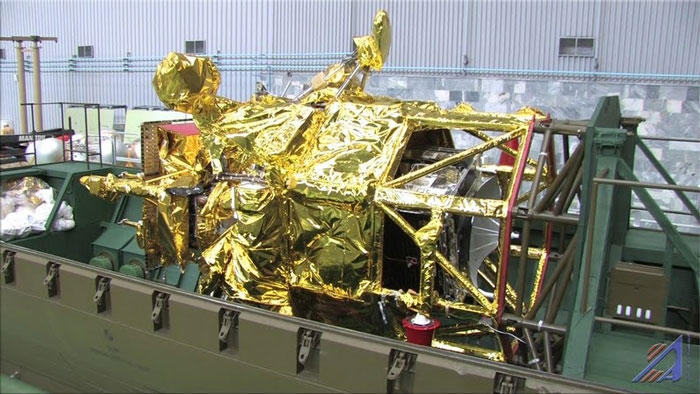The Russian spacecraft suddenly flew up
Experts of the Russian Federal Space Agency (Roskomos) were embarrassed to see the altitude of the Mars spacecraft, wandering in the air, rising abnormally.
Phobos Grunt spacecraft was launched on November 8 to sample soil and rock on Mars's Phobos satellite. But after the ship separated from the rocket, its two engines did not start to fly towards Mars. So the ship is flying low on the Earth's orbit and experts acknowledge that its altitude will gradually decrease after the power in the batteries is exhausted. Russian, European and American experts are racing against time to contact the ship. If that effort succeeds, they can launch its two engines.

But yesterday Vitaly Davydov, Roskomos' deputy director, announced the rising trajectory of Phobos Grunt and that phenomenon made the experts confused.
'Unfortunately, we have not been able to contact Phobos Grunt so we do not understand what is happening inside the ship,' RIA Novosti quoted Davydov.
Davydov claimed that the height of the Phobos Grunt increased due to its control system still operating or fuel leaking.
Earlier a Russian space expert predicted that, due to aerodynamic resistance, Phobos Grunt's batteries had the same function as the wings, so they flew higher.
Roskomos had predicted that Grunt Phobos would fall to Earth in early January next year due to its altitude declining. But an expert said Phobos Grunt would fall around mid-March due to its trajectory rising.
Igor Lisov, editor-in-chief of Cosmonautics News , insists that experts have almost no chance to contact the Phobos Grunt.
The US Aeronautics Agency (NASA) said Russia suffered 17 failures in its attempt to explore Mars since 1960. The latest failure occurred in 1996, when the Russian ship Mars-96 exploded. during the launch.
- The crew on the ISS evacuated to avoid Russian satellite debris
- The launch of the spacecraft looks from orbit
- Chinese spacecraft flew over the planet Toutatis
- The first time the spacecraft flew around Mercury
- Uncontrolled Russian spacecraft can collide with the Earth
- Russian spaceships can fall to the ground
- Russian spacecraft caught fire when plunging to Earth
- America conceals information about Russian spacecraft?
- Unmanned spacecraft carrying Russian humanoid robots responding defeat
- Found missing Russian spacecraft
- Russia is about to launch 'giant donuts' on the edge of the Solar System in record time
- Russia is about to build a new type of spacecraft
 Van Allen's belt and evidence that the Apollo 11 mission to the Moon was myth
Van Allen's belt and evidence that the Apollo 11 mission to the Moon was myth The levels of civilization in the universe (Kardashev scale)
The levels of civilization in the universe (Kardashev scale) Today Mars, the sun and the Earth are aligned
Today Mars, the sun and the Earth are aligned The Amazon owner announced a secret plan to build a space base for thousands of people
The Amazon owner announced a secret plan to build a space base for thousands of people